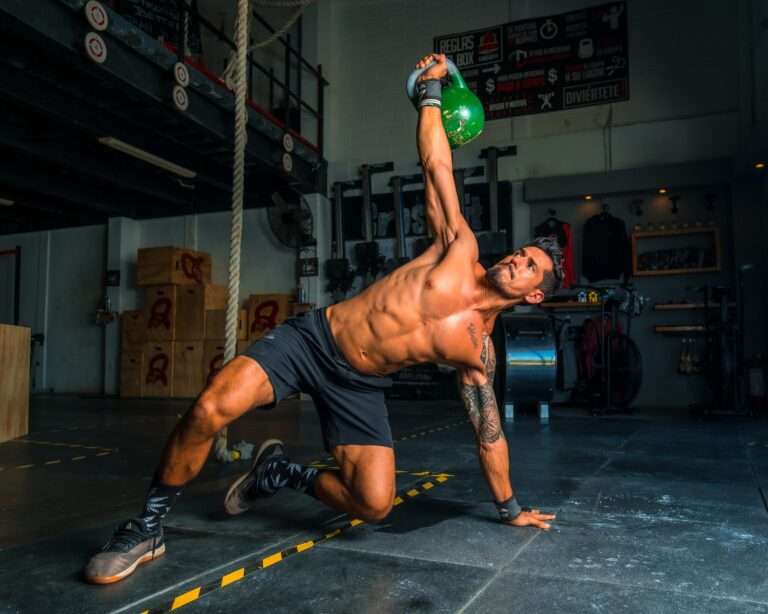Calisthenics Pull-Ups: Variations, Technique, Benefits

Hey there, fitness enthusiasts! If you’re looking to level up your workout routine, there’s no exercise quite like the pull-up and pull-up variations to get the job done. It’s a classic move that’s been a favorite in the fitness world for ages, and for good reason. Whether you’re a pro calisthenics athlete or just starting out on your fitness journey, pull-ups, especially the various kinds, can work wonders for your upper body strength, overall fitness, and that dreamy-toned physique.
In this article, we’re diving deep into the world of calisthenics pull-ups and their variations, talking about all the different styles you can try, the right way to do them, and why they are awesome for your body. Whether you’re on a quest to nail your very first pull-up or you’re ready to tackle some seriously advanced variations, we’ve got you covered. So, go grab that pull-up bar, and let’s get started on the journey to a fitter, healthier you!
The Fundamentals of Pull-Ups
Before diving into variations, it’s crucial to know the fundamentals of a standard pull-up. A pull-up is a bodyweight exercise that targets various muscle groups, primarily the latissimus dorsi (lats), biceps, and upper back. Here’s what you need to know:
Definition of a Standard Pull-Up:
A pull-up is a calisthenics compound bodyweight exercise that involves hanging from a horizontal bar with your palms facing away from your body and pulling your chest up to the bar. It’s essential to understand this foundational movement.
Muscles Targeted During a Pull-Up
The primary muscles targeted during a pull-up include the latissimus dorsi (lats), biceps, and upper back. Knowing which muscles are working will help you appreciate the holistic benefits.
Proper Form and Technique
Performing a pull-up with proper form is critical for safety and effectiveness. We’ll go through body positioning, grip, and the optimal range of motion.
Common Mistakes to Avoid
To ensure you get the most out of your pull-ups while minimizing the risk of injury, we’ll highlight common mistakes to steer clear of, such as kipping or swinging excessively.
The Benefits of Pull-Up Exercises
Pull-ups have multiple benefits that go far more than simply increasing upper-body strength. Understanding these benefits can be a great motivator for adding pull-ups into your exercise routine:
Increased Upper Body Strength
Pull-ups primarily target the muscles in your back, shoulders, and arms, including the latissimus dorsi, biceps, and deltoids. Regularly performing pull-ups can help you build significant upper body strength, which is valuable for various daily activities and other forms of exercise.
Core Strength
While primarily an upper-body exercise, pull-ups also engage your core muscles to stabilize your body during the movement. This can help improve core strength and stability over time. A weak core can impact your pull-up performance and to increase that you can do core exercises to strengthen your core.
Improved Grip Strength
Grip strength is essential not only for pull-ups but also for various functional movements and sports. Pull-ups require a strong grip to support your body weight, and consistently practising them can help you develop and enhance your grip strength.
Enhanced Posture and Shoulder Health
Pull-up exercises engage the muscles responsible for maintaining good posture. Strengthening your back and shoulder muscles can help prevent poor posture, which can lead to neck and back pain. Additionally, pull-ups can improve the stability and overall health of your shoulder joints.
Versatility in Workouts
Pull-ups can be incorporated into a variety of workout routines. You can use different grip variations (e.g., wide grip, narrow grip, chin-ups) to target different muscle groups. They can be part of a full-body workout or focus on strengthening specific areas, making them a versatile exercise option.
Minimal Equipment
Pull-ups can be performed with minimal equipment, making them accessible to many individuals. All you need is a sturdy horizontal bar or a pull-up bar, which can be found in many gyms or even installed at home. This simplicity makes pull-ups an excellent exercise choice for those who prefer minimal equipment or have limited access to a gym.
Pull-Up Variations
Pull-up variations can add depth and diversity to your workout routine, targeting specific muscle groups and increasing the challenge as you progress in your fitness journey. Here’s a more detailed look at various pull-up variations categorized by difficulty levels:
Basic Pull-Up Variations:
Assisted Pull-Ups
Assisted pull-ups are ideal for beginners or those working on building up to unassisted pull-ups. You can use resistance bands or a partner’s assistance to reduce the resistance, making it easier to perform the exercise while still working on strength development.
Wide-Grip Pull-Ups
This variation involves placing your hands wider apart on the bar. It primarily targets the outer back muscles, specifically the latissimus dorsi (lats), helping to widen your upper back. Wide-grip pull-ups are excellent for achieving that V-shaped torso.
Chin-Up
In a chin-up, your palms face you with a narrower grip. This variation places more emphasis on the biceps and is a fantastic exercise for building arm strength. It also engages the muscles in your upper back and shoulders.
Intermediate Pull-Up Variations:
Commando Pull-Ups
Commando pull-ups involve a unique hand placement, where one hand is higher on the bar, and the other is lower. This variation effectively targets the brachialis muscle, which lies underneath the biceps, helping you develop forearm strength and a well-rounded upper arm.
L-Sit Pull-Ups
Adding an isometric core challenge, L-sit pull-ups require you to lift your legs into an L-shape while performing the pull-up. This not only strengthens your upper body but also enhances overall athleticism and core stability.
Archer Pull-Ups
Archer pull-ups are an advanced variation that emphasizes one side of your body at a time. As you pull yourself up, you shift your weight to one side, effectively working one arm more than the other. This promotes balance and helps to correct any strength imbalances between your arms.
Advanced Pull-Up Variations:
One-Arm Pull-Ups
The one-arm pull-up is a highly challenging exercise that demonstrates exceptional grip strength and overall upper-body power. It requires tremendous strength and stability to lift your entire body using just one arm. This is an advanced goal that may take a long time to achieve.
Muscle-Ups
Muscle-ups combine a pull-up with a dip in a single, fluid motion. Mastering muscle-ups showcases unparalleled upper-body control and strength. It’s a popular exercise in calisthenics and gymnastics training due to its complexity.
Clapping Pull-Ups
Clapping pull-ups are plyometric in nature. After pulling yourself up, you explosively release the bar, clap your hands, and then catch the bar again before descending. This exercise enhances explosive power and is invaluable for athletes requiring quick bursts of strength and agility.
Combining Pull-Up Variations for a Complete Workout
Combining pull-up variations in your workout can create a comprehensive upper-body workout routine that targets multiple muscle groups from various angles. By combining these pull-up variations into your pull-day workout or upper body routine, you can achieve a more holistic approach to training. pull day workout targets various back muscle groups, enhances grip strength, and promotes overall upper body strength and aesthetics. Remember to maintain proper form, control your movements, and gradually increase the intensity as your strength improves. A well-structured pull-up routine can be a game-changer in your fitness journey.
Safety and Precautions
A. Warming Up: The Importance of Injury Prevention
Warming up is vital before pull-up workouts to prevent injuries and boost performance. It:
- Prevents Injuries: A warm-up gradually increases blood flow, reducing the risk of muscle strains and tears.
- Enhances Muscle Function: Improved circulation leads to better muscle function, flexibility, and range of motion.
- Mental Preparation: It helps mentally prepare you for your workout, enhancing focus and the mind-muscle connection.
Effective Warm-Up Strategies: Include dynamic stretching, a brief cardiovascular warm-up, gradual intensity progression, foam rolling, and mindful breathing.
B. Preventing Common Injuries in Pull-Ups
Common pull-up injuries and prevention:
- Muscle Strains: Maintain proper form and increase intensity gradually.
- Rotator Cuff Injuries: Warm up shoulders and engage in shoulder-strengthening exercises.
- Tendinitis: Balance workouts and include rest days.
- Grip Injuries: Use gloves or chalk to protect hands.
- Herniated Discs: Maintain a neutral spine and strengthen the core. Listen to your body and seek professional advice for persistent pain or discomfort.
Conclusion
In summary, pull-up variations offer an unparalleled opportunity to sculpt upper body strength, improve overall fitness, and achieve your fitness goals. Whether you’re starting your pull-up journey or looking to conquer advanced variations, there’s something for everyone in this versatile exercise. Incorporate these variations into your routine, stay consistent, and watch your strength and fitness levels soar. Remember, the path to mastering pull-up variations is a rewarding and fulfilling journey.






